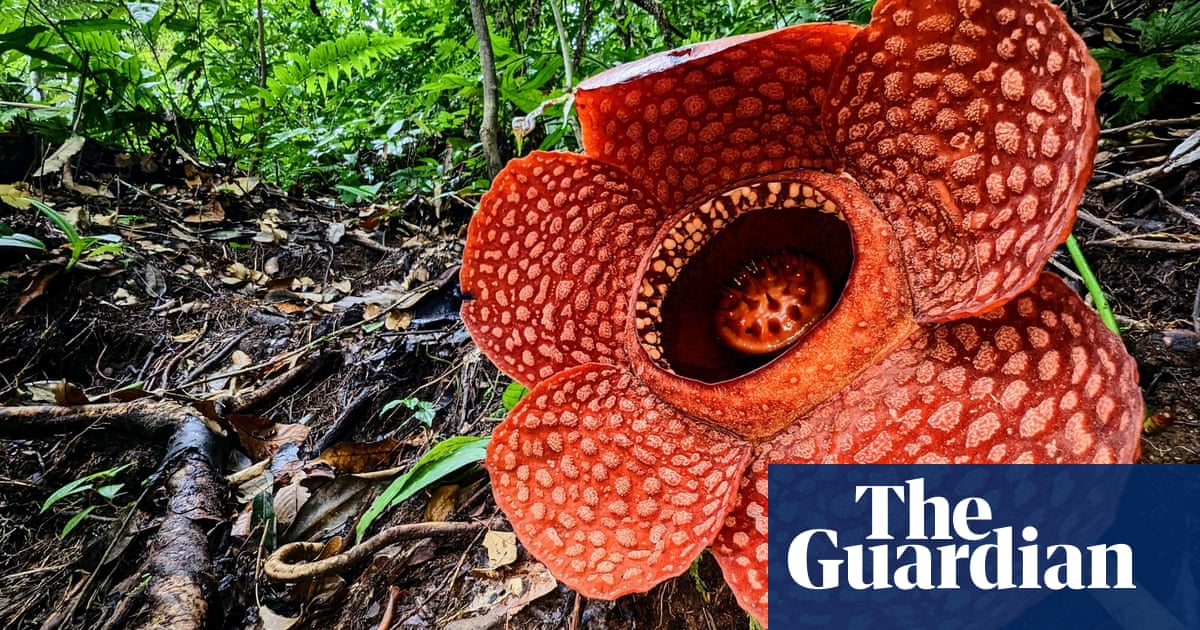
It might be best known today for its otters and puffins but 170m years ago the Isle of Skye was home to an enormous flying reptile with a wingspan bigger than a kingsize bed, researchers have revealed.
Fossil hunters in Scotland say they have recovered the remains of the world’s largest Jurassic pterosaur, adding the creature – known informally as a pterodactyl – also boasted a mouthful of sharp teeth for spearing and trapping fish.
With a wingspan of about 2.5 metres or larger – around the size of the largest flying birds today, such as the wandering albatross – the creature sheds new light on the evolution of pterosaurs, given they were not thought to have reached such a size until about 25m years later.
“When this thing was living about 170m years ago, it was the largest animal that had ever flown, at least that we know of,” said Prof Steve Brusatte, a co-author of the research from the University of Edinburgh.
“We’ve really dragged back in time the evolution of large pterosaurs,” he said.
Brusatte added previous finds suggested pterosaurs did not grow much larger than about 1.6-1.8 metres in wingspan during the Jurassic, only reaching much larger sizes during the Cretaceous period.
“There were pterosaurs living at the end of the Cretaceous when the asteroid hit that were the size of fighter jets,” said Brusatte, referring to the mass extinction 66m years ago that wiped out non-avian dinosaurs, pterosaurs and myriad other creatures.
The latest discovery calls into question the idea competition with birds may have initially driven the boom in pterosaur size.
“Birds evolved from dinosaurs around the time when this [pterosaur] was living,” said Brusatte, although he added birds may have exerted evolutionary pressures for them to grow larger still.
It is not the first time pterosaurs have been unearthed in the UK – the fossil hunter Mary Anning unearthed what was dubbed her “flying dragon” in 1828.
Brusatte said the new discovery, dubbed Dearc sgiathanach meaning both ‘winged reptile’ and ‘reptile from Skye’ in Scottish Gaelic, is notable for the completeness of the fossil.
“It’s probably about 70% complete, which is really just outstanding for a pterosaur, because these things are very difficult to fossilise,” he said, noting the walls of many of the bones are not much thicker than a sheet of paper.
Brusatte said an analysis of the bones revealed the animal was at most a teenager and was still growing, adding the adult wingspan could have been more than three metres.
The team also carried out scans of the pterosaur’s skull, allowing them to build a digital model of the brain. The results reveal the animal had very large optic lobes, suggesting it had very good eyesight.
Writing in the journal Current Biology, Brusatte and colleagues report how the fossils, which have been unveiled at the National Museum of Scotland, were discovered by PhD student Amelia Penny, who spotted the creature’s skull during fieldwork on the Isle of Skye in 2017.
“It didn’t look like anything else I’d seen,” she told the Guardian.
“I grew up going to the Natural History Museum in London and reading about Mary Anning’s fossil discoveries on the Jurassic Coast – which definitely influenced my decision to become a palaeontologist,” she added. “But to find a new Jurassic reptile, especially a fossil of this significance, is not something I’d ever dared to expect might happen to me.”
Dr David Unwin, an expert in pterosaurs at the University of Leicester who was not involved in the research, said it was debatable whether the newly discovered creature was the largest of its era, noting some fragmented bones from other fossils have already hinted at similar sized pterosaurs in the middle Jurassic.
Nonetheless he said the find was significant because fossils dating to that time are scarce, while there are very few pterosaur remains that are as complete.
“This new find will allow us to go back to those older collections and understand much better what we’ve got in there,” he said. “It’s a big piece of the puzzle in our evolutionary history of pterosaurs.”











